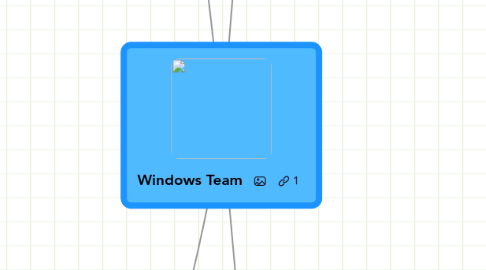
1. Introduction
1.1. Purpose
1.1.1. Develop an overview of the intent of the team
1.1.2. Define expectations, responsibilities and ownership
1.1.3. Continuously expand individual skillsets
1.2. Stakeholders
1.3. Team
1.3.1. Bich Vu
1.3.1.1. Qualifications
1.3.1.2. Certifications
1.3.1.3. Experience
1.3.1.4. Work History
1.3.1.5. Goals
1.3.2. Cong Nguyen
1.3.2.1. Qualifications
1.3.2.2. Certifications
1.3.2.3. Experience
1.3.2.4. Work History
1.3.2.5. Goals
1.3.3. David Riley
1.3.3.1. Qualifications
1.3.3.2. Certifications
1.3.3.3. Experience
1.3.3.4. Work History
1.3.3.5. Goals
1.3.4. Jeremy Thompson
1.3.4.1. Qualifications
1.3.4.2. Certifications
1.3.4.3. Experience
1.3.4.4. Work History
1.3.4.5. Goals
1.4. Related Documents
1.5. Author(s)
1.6. Sign-Off List
2. Management
2.1. Business SLAs
2.2. FAQ/Glossary
2.3. FTE/Consultants
2.4. Integration
2.5. Multi Datacenter
2.5.1. Houston
2.5.1.1. Rapid server buildouts
2.5.1.1.1. Altiris
2.5.1.1.2. Kickstart
2.5.1.1.3. PXE
2.5.1.1.4. Other
2.5.1.2. Management
2.5.1.2.1. Rack
2.5.1.2.2. Cable
2.5.1.2.3. Power
2.5.1.2.4. Environment
2.5.1.3. IDFs
2.5.2. Tulsa
2.5.2.1. Management
2.5.2.1.1. Rack
2.5.2.1.2. Cable
2.5.2.1.3. Power
2.5.2.1.4. Environment
2.5.2.2. Rapid server buildouts
2.5.2.2.1. Altiris
2.5.2.2.2. Kickstart
2.5.2.2.3. PXE
2.5.2.2.4. Other
2.5.2.3. IDFs
2.5.3. Denver
2.5.3.1. Management
2.5.3.1.1. Rack
2.5.3.1.2. Cable
2.5.3.1.3. Power
2.5.3.1.4. Environment
2.5.3.2. Rapid server buildouts
2.5.3.2.1. Altiris
2.5.3.2.2. Kickstart
2.5.3.2.3. PXE
2.5.3.2.4. Other
2.5.3.3. IDFs
2.5.4. CoLo
2.5.4.1. Management
2.5.4.1.1. Rack
2.5.4.1.2. Cable
2.5.4.1.3. Power
2.5.4.1.4. Environment
2.5.4.2. Rapid server buildouts
2.5.4.2.1. Altiris
2.5.4.2.2. Kickstart
2.5.4.2.3. PXE
2.5.4.2.4. Other
2.6. Planning
2.7. Redundancy/Recovery
2.8. Simplified Solutions
2.9. Supported Products
2.9.1. Architectural Summary
2.9.2. Deployment Summary
2.9.3. Hardware
2.9.3.1. HP
2.9.3.2. Dell
2.9.3.3. Other
2.10. Time Management
2.10.1. Constraints
2.10.2. Other
2.11. Vendors
2.11.1. Rating/Reputation
2.11.1.1. Pugh
2.11.2. Professional Services
2.11.3. Support
2.11.3.1. Installation
2.11.3.2. Maintanance
2.11.3.3. Operational
2.11.4. Training/Turnover
2.11.5. Vendor Listing
2.11.5.1. CDW
2.11.5.2. HP
2.11.5.3. Other
2.12. Logistics
2.12.1. PTO
2.12.2. Travel
2.12.3. Goals
2.12.3.1. Team Goals
2.12.3.2. Individual Goals
2.12.3.2.1. Performance
2.12.3.2.2. Developmental
3. Services
3.1. - Concepts
3.1.1. SLAs
3.1.2. Monitoring
3.1.3. Change Control
3.1.4. Capacity planning/monitoring
3.1.5. Licensing
3.1.6. Scripting
3.1.6.1. VB
3.1.6.2. Batch
3.1.6.3. Powershell
3.2. - Enterprise Services
3.2.1. Directory Services
3.2.1.1. DNS
3.2.1.1.1. Internal Name Resolution
3.2.1.1.2. External Name Resolution
3.2.1.2. DHCP
3.2.2. Messaging
3.2.2.1. Email
3.2.2.1.1. Exchange
3.2.2.1.2. TrendMicro IMSA
3.2.2.2. Lync
3.2.3. Security
3.2.4. Content Management
3.2.5. Change Management
3.3. AFE Navigator
3.4. Active Directory
3.4.1. GPO
3.4.2. DFS
3.4.3. User Management
3.4.3.1. Service Accounts
3.4.3.2. Security Groups
3.4.3.3. AD Objects
3.4.3.3.1. New
3.4.3.3.2. Updates
3.4.3.3.3. Disabled
3.4.3.3.4. Clean-up
3.4.3.4. AD Nag
3.4.3.5. Account Lockouts
3.5. Anti-virus
3.6. Backup
3.6.1. Symantec
3.6.1.1. Client Installs
3.6.1.2. Policies
3.6.1.3. Server Management
3.6.1.4. Backup restoration
3.6.2. Networker
3.6.2.1. Client Installs
3.6.2.2. Policies
3.6.2.3. Server Management
3.6.2.4. Backup restoration
3.6.3. Other
3.6.3.1. Client Installs
3.6.3.2. Policies
3.6.3.3. Server Management
3.6.3.4. Backup restoration
3.6.4. Tape Libraries
3.6.4.1. Operating System Version
3.6.4.2. System Specifications
3.6.4.3. Model
3.6.4.4. Physical Location
3.7. Citrix
3.8. Data
3.8.1. SQL
3.8.1.1. Management
3.8.1.2. Interactivity
3.8.1.3. Ownership
3.8.2. Oracle
3.8.2.1. Ownership
3.8.2.2. Interactivity
3.8.2.3. Management
3.8.3. Other
3.8.3.1. Ownership
3.8.3.2. Interactivity
3.8.3.3. Management
3.9. FTP
3.10. IDS/IPS
3.10.1. TrendMicro
3.10.2. SourceFire
3.11. KMS
3.12. NFS/CIFS
3.13. NTP
3.14. Patch Management
3.15. Peleton
3.16. Print Services
3.16.1. Setup
3.16.2. Support
3.16.3. SMTP ACL (Exchange)
3.17. Radius
3.18. SNMP
3.19. SSH
3.20. Support
3.20.1. On Call Support
3.20.2. Wiki
3.20.3. Troubleshooting
3.20.4. AtTask
3.20.4.1. Personal Tasks
3.20.4.2. Projects
3.20.4.3. Team Requests
3.20.4.4. Ticket Cop
3.21. System Monitoring
3.21.1. Alerting
3.21.1.1. Realtime
3.21.1.2. Historical/Trending
3.21.2. Capacity Planning
3.21.3. Correlation
3.21.3.1. Realtime
3.21.3.2. Historical/Trending
3.21.4. Dashboard
3.21.4.1. Web-based
3.21.4.2. Client-based
3.21.4.3. Drilldown
3.21.4.4. Data Aggregation/History
3.21.4.5. Deterministic views
3.21.5. Maintenance/Operation
3.21.5.1. FTE
3.21.5.2. Updates
3.21.5.2.1. Central
3.21.5.2.2. Standalone
3.21.6. Metrics
3.21.6.1. Realtime
3.21.6.2. Historical/Trending
3.21.7. Modeling/Templates
3.21.8. Reporting
3.21.8.1. Adhoc
3.21.8.2. Scheduled
3.21.8.3. Customizable
3.21.8.4. Format (html, pdf, xls, etc)
3.21.9. Role-based access control
3.21.9.1. Database
3.21.9.1.1. Local
3.21.9.1.2. Remote
3.21.9.2. Directory Integration
3.21.9.2.1. AD
3.21.9.2.2. User Management
3.21.9.2.3. LDAP
3.22. User Provisioning
3.23. VPN
3.24. Web Servers
3.24.1. IIS
3.24.2. Other
4. Systems
4.1. Physical Servers
4.1.1. Datacenter
4.1.2. Network
4.1.2.1. Configuration
4.1.2.2. Devices
4.1.2.2.1. Switches
4.1.2.2.2. Access Points
4.1.2.2.3. Tools
4.1.2.3. Analysis
4.1.2.3.1. Wireshark/Ethereal
4.1.2.3.2. IDS system
4.1.2.3.3. Other
4.1.2.4. Supported Protocols
4.1.2.4.1. HTTP/HTTPS
4.1.2.4.2. FTP/TFTP
4.1.2.4.3. LDAP
4.1.2.4.4. SMTP/POP3
4.1.2.4.5. DNS
4.1.2.4.6. DHCP
4.1.2.4.7. Telnet
4.1.2.5. Concepts
4.1.2.5.1. OSI Layers
4.1.2.5.2. VLANs
4.1.2.5.3. STP
4.1.2.5.4. NAT/PAT
4.1.2.5.5. Routing
4.1.2.5.6. Wireless
4.1.2.5.7. Port Mirroring/Monitoring
4.1.2.5.8. Link Aggregation
4.1.2.5.9. Stacking
4.1.2.5.10. AAA
4.1.3. Server
4.1.3.1. *nix
4.1.3.1.1. Operating System
4.1.3.1.2. Platform
4.1.3.1.3. Events
4.1.3.1.4. Configuration
4.1.3.1.5. Owner
4.1.3.2. Windows
4.1.3.2.1. Operating System
4.1.3.2.2. Platform
4.1.3.2.3. Events
4.1.3.2.4. Configuration
4.1.3.2.5. Owner
4.1.3.3. Other
4.1.3.3.1. Operating System
4.1.3.3.2. Platform
4.1.3.3.3. Events
4.1.3.3.4. Configuration
4.1.3.3.5. Owner
4.1.4. Backup/Restore
4.1.4.1. Capacity
4.1.4.2. Events
4.1.4.3. Configuration
4.1.5. Storage
4.1.5.1. NFS
4.1.5.1.1. Network
4.1.5.1.2. Disk
4.1.5.1.3. Configuration
4.1.5.1.4. Management
4.1.5.2. iSCSI
4.1.5.2.1. Network
4.1.5.2.2. Disk
4.1.5.2.3. Configuration
4.1.5.2.4. Management
4.1.5.3. Other
4.1.5.3.1. Network
4.1.5.3.2. Disk
4.1.5.3.3. Configuration
4.1.5.3.4. Management
4.2. Virtualized Servers
4.2.1. Hosts
4.2.1.1. CPU
4.2.1.2. Memory
4.2.1.3. Disk
4.2.1.3.1. IOPS
4.2.1.3.2. Throughput
4.2.1.3.3. Volume/Partition Capacity
4.2.1.4. Events
4.2.1.4.1. Security
4.2.1.4.2. System
4.2.1.4.3. Application
4.2.1.5. Configuration
4.2.1.5.1. Operating System Version
4.2.1.5.2. System Specifications
4.2.1.5.3. Model
4.2.1.5.4. Physical Location
4.2.2. Clients
4.2.2.1. CPU
4.2.2.2. Memory
4.2.2.3. Disk
4.2.2.3.1. Throughput
4.2.2.3.2. Volume/Partition Capacity
4.2.2.3.3. IOPS
4.2.2.4. Events
4.2.2.4.1. Application
4.2.2.4.2. System
4.2.2.4.3. Security
4.2.2.5. Configuration
4.2.3. Concepts
4.2.3.1. vMotion
4.2.3.2. Storage vMotion
4.2.3.3. HA/DR
4.2.3.4. vCenter Converter
4.2.3.5. Shared storage
4.2.3.5.1. iSCSI
4.2.3.5.2. NFS
4.2.4. Network
4.2.4.1. Farm
4.2.4.2. Configuration
4.3. Telecom
4.3.1. Support
4.3.2. Procurement
4.3.3. Auto-attendant
